|
Notes: Birkenhead Monks Ferry was the northern terminus of the Chester & Birkenhead Railway (C&BR). On 12 July 1837 the C&BR was authorised to build a 15-mile single-track line between Grange Lane in Birkenhead and Brook Street in Chester and the line opened on 23 September 1840. The C&BR wished to capture traffic from Liverpool which lay across the River Mersey from Birkenhead. To do so they were reliant on ferries that operated between Liverpool and Birkenhead Monks Ferry. The distance between the ferry stage at Monks Ferry and the Grange Lane station was 1,200yd. For first class passengers the C&BR laid on an omnibus service between the ferry and the station but the situation was an impediment to growth. In May 1842 the C&BR obtained an act to build a single-track line from Grange Lane to Monks Ferry, most of which was in a tunnel. Work began on the extension in October 1843.
On 23 October 1844 the extension from Grange Lane to the riverside terminus at Monks Ferry via a 436yd tunnel opened.
Monks Ferry station was located on the west bank of the River Mersey on the southern edge of Birkenhead. The main entrance to the station was on the south side and was reached via Monks Ferry Brow which connected the ferry landing point to Church Street. Church Street passed over the line on a bridge at the west end of the station. The main facilities were housed within a single-storey building on the south side of the station. They consisted of two booking offices, one on either side of the main entrance foyer, a cloak room, stationmaster’s office, refreshment rooms, toilets and waiting rooms for both sexes, a lamp room and general storage rooms.
Behind the building were the platforms. There were three in all, the first being adjacent to the main facilities; it was in all likelihood the departure platform. On the north side of the station, separated from the departure platform by three tracks, was an island platform with two faces, and they were probably arrival platforms. There were no facilities on the island platform but running along it in the centre, parallel to the lines, was a series of brick arches; these supported a train-shed roof that covered most of the station area.
At the eastern end of the station was a turntable used for turning locomotives and to facilitate them running around their trains. On the north side of the station were three sidings.
On the western side of Church Road four lines from the station merged into a single track that led into the Monks Ferry Tunnel. A signal box located on the south side of the line, just to the east of the tunnel portal, controlled traffic movements into and out of the station.
At the time of opening Monks Ferry would have had services to Chester and to London via the Grand Junction Railway (GJR) route from Chester to Crewe. The GJR became part of the London & North Western Railway (LNWR) on 16 July 1846.
On 22 July 1847 the C&BR became part of the Birkenhead, Lancashire & Cheshire Railway (BL&CR). By 18 December 1850 the BL&CR had created a route from Chester to Warrington. At Chester lines had been opened to Holyhead by the Chester & Holyhead Railway (C&HR) on 5 March 1850 and to Shrewsbury by the Shrewsbury & Chester Railway (S&CR) on 16 October 1848 affording more journey opportunities from Birkenhead.
| Departures March 1850 |
To |
Arrivals March 1850 |
From |
| 6.30am |
Chester |
5.35am |
Chester |
| 8.30am |
Crewe |
9.15am |
Chester |
| 10.00am |
Chester |
9.30am |
Chester |
| 10.45am |
Chester |
11.15am |
Chester |
| 12.30pm |
Chester |
12.45pm |
Chester |
| 3.20pm |
Chester |
2.45pm |
Chester |
| 4.30pm |
London Euston |
5.25pm |
London Euston |
| 5.15pm |
Chester |
6.45pm |
Chester |
| 7.30pm |
Chester |
9.30pm |
Chester |
| 9.06pm |
Chester |
10.50pm |
Crewe |
| 9.15pm |
Crewe |
11.00pm |
Chester |
From 1 May 1857 the Great Western Railway (GWR) started a passenger service between Birmingham and Birkenhead Monks Ferry. They did so after taking over the S&CR on 1 September 1854.
On 1 August 1859 the BL&CR became the Birkenhead Railway (BR). The following year it was taken over by the Great Western Railway (GWR) and LNWR as a joint line. The two companies set up the Birkenhead Joint Committee to run the line and the services. Birkenhead Monks Ferry station was owned equally but responsibility for its upkeep and general repairs was given to the LNWR. Permanent way was also the responsibility of the LNWR but signalling was allocated to the GWR.
From 1 October 1861 the GWR started to run services between London Paddington and Monks Ferry giving the station two links to the capital city. The GWR service included times to and from Liverpool Pier Head via the ferry. In 1863 the GWR started to run a service between Birkenhead and Dover. The February 1863 timetable below shows 13 departures on weekdays and 5 on Sundays.
By the 1870s Monks Ferry was too small for the traffic levels that the line was carrying and there was no room to expand it. The single-track tunnel was also a constraint. The solution was to build a new railway station and passenger ferry terminal at Woodside less than half-a-mile to the north. The new station opened on 31 March 1878 and Monks Ferry closed as a passenger station.
Consideration was given to its conversion to a locomotive shed, but it was felt that it was not large enough and an alternative site was chosen at Mollington Street. Instead it became a goods station and coaling facility for river tugs. By 1899 the trainshed roof had been removed.
Monks Ferry continued to function as a goods station until March 1961 when it was taken out of use. The track was not lifted until 1967.
The station was demolished in the late 1960s and in the 1980s its site was developed with residential apartments. By 2013 the only evidence of there ever being a railway at Monks Ferry is a sandstone wall on Church Road which formed part of the overbridge at the west end of the station.
Sources:
- Bradshaws Rail Times 1850 - Middleton Press 2012
- Encyclopaedia of British Railway Companies - C Awdry - Guild Publishing 1990
- Paddington to the Mersey - Dr R Preston-Hendry & R Powell-Hendry - OPC 1992
- The Birkenhead Railway - T.B.Maund - RCTS 2000
To see other stations on the Birkenhead - Chester line click on the station name: Birkenhead Grange Lane, Tranmere,
Rock Lane, Hooton, Ledsham, Mollington & Upton-by-Chester
To see the stations of the Birkenhead Woodside line click on the station name: Birkenhead Woodside, Birkenhead Town
|

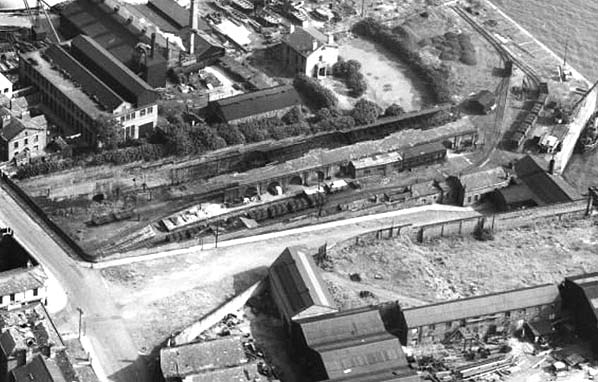
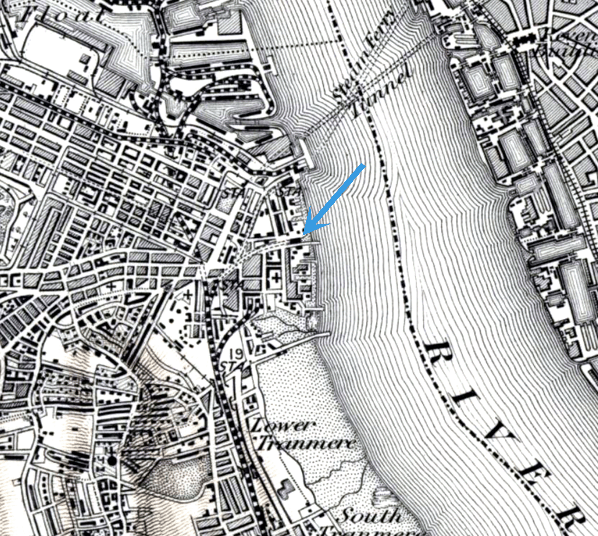
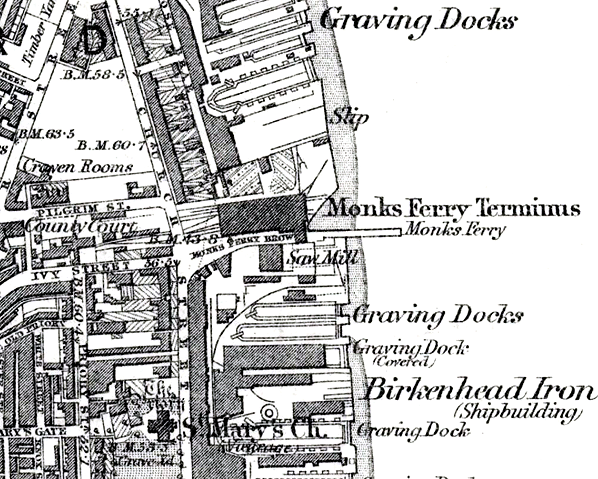
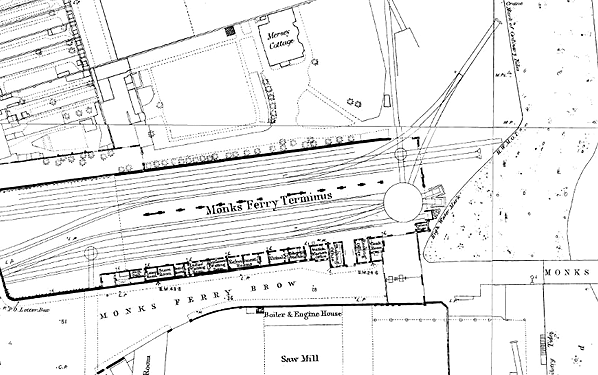
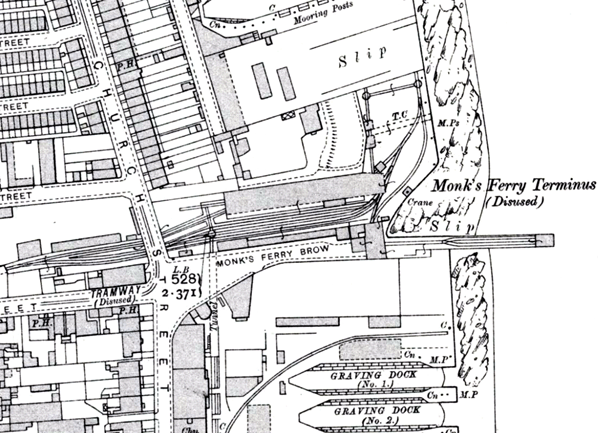 Birkenhead Monks Ferry when it was a goods facility shown on 25-inch scale map from 1926.
Birkenhead Monks Ferry when it was a goods facility shown on 25-inch scale map from 1926.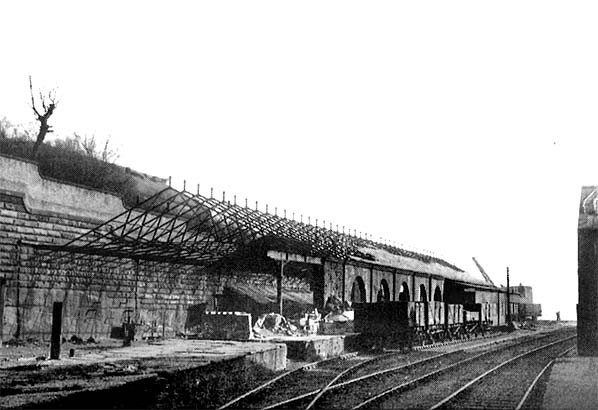 Birkenhead Monks Ferry station looking east along the former departure platform on 16 March 1948. To the left is the arrival platform. The station roof had been removed by this time but a section of the goods station roof can still be seen. At this time the station was in use as a coal ing facility for river tugs. As more diesel tugs were introduced Monks Ferry lost its importance.
Birkenhead Monks Ferry station looking east along the former departure platform on 16 March 1948. To the left is the arrival platform. The station roof had been removed by this time but a section of the goods station roof can still be seen. At this time the station was in use as a coal ing facility for river tugs. As more diesel tugs were introduced Monks Ferry lost its importance.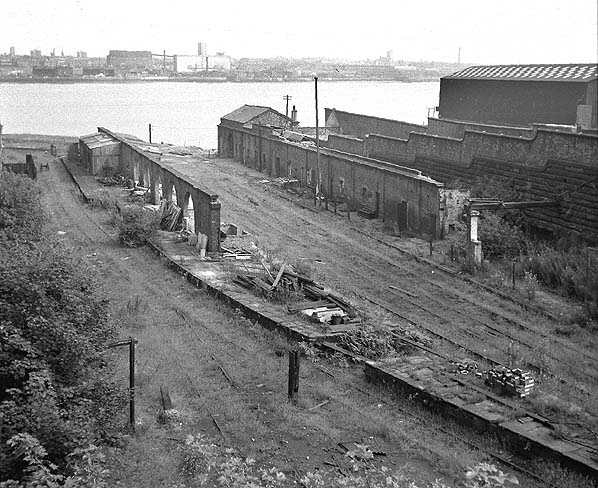
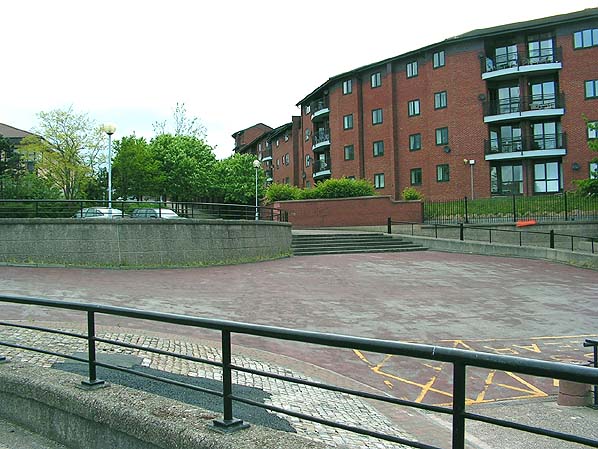
.jpg)
.jpg)
.jpg)
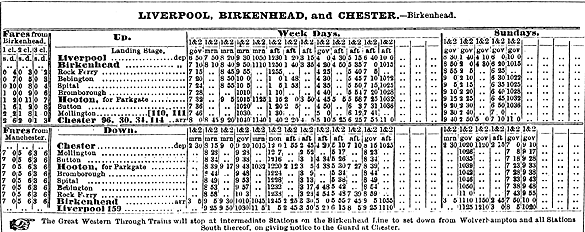





 Home Page
Home Page